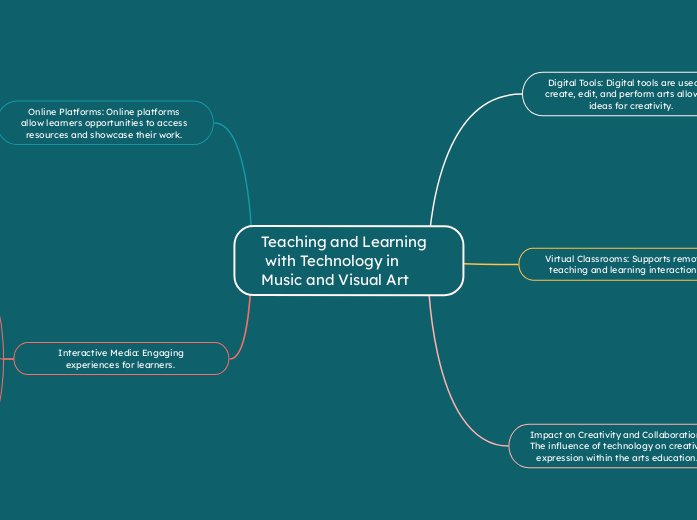
Music Software: Garage band and Ableton live allow music production on computers.
Graphic Design Software: Adobe Photoshop and Illustrator
Virtual Instruments
Video Conferencing: Zoom can be used to have live art or music lessons.
LMS Integration: Learning management systems such as canvas.
Interactive whiteboards for allowing visual demonstrations.
Collaborative Platforms such as google drive.
Creative Coding and Global collaboration.
MOOCs: Massive Open Online Courses offer access to music and art education.
Artist Communities: Devian Art and SoundCloud allow artist to share their work and feedback.
Streaming Services such as YouTube and Spotify.
Augmented Reality: This is tools that overlay digital content onto the real world, used in visual art education.
Music Apps: Game based learning.
Virtual Reality: Headsets that offer virtual galleries and experiences.